
Santeros Against Fraud and Exploitation (SAFE) is an action committee of the Santeria Church of the Orishas
As part of the Santeria Church of the Orisha‘s mission to educate the public about traditional Santeria (Lucumi/Lukumi) practice, we are issuing a SAFE Alert regarding fraudulent diloggun readings and non-traditional Santeria practices in the greater Long Beach, California area.
Recently, members of SAFE (Santeros Against Fraud and Exploitation) visited an occult store located near our church in the greater Long Beach, California area. Upon visiting this store we were told that they offered Santeria classes as well as cowrie shell readings (diloggun readings) and initiations. We will not reveal the name of the store at this time, but we will discuss what is taking place at this store and the nature of their “Santeria” practice that is not in line with traditional practices as held by the culture bearers of Santeria (Lucumi/Lukumi).
Red Flags
While present at the store we were allowed to see their orisha room. The orisha room consisted of a series of shelves each containing a statue of a modern depiction of each orisha and some trinkets. There were no pots present with the items required for a shrine to be a legitimate orisha shrine. (otas, diloggun and tools were absent.)
Their resident Babalawo (who does all the readings and teaches the classes) spoke to me for a bit and told me some information about Santeria. About 60% of the information was accurate, the other 40% of it was completely incorrect and was either from poorly researched books or incorrect web sites. He also then explained that his lineage does not believe in animal sacrifice and that the religion has evolved past that.
Additionally he claimed that their classes work in such a way that after 12 weeks in their class you’ll receive the elekes initiation and be a Padrino or Madrina (a title only conferred upon a person when they have initiated ANOTHER person – i.e. once they are an olorisha and have godchildren). His class structure made it sound like a wiccan class with three degrees of initiation, only calling them “padrino, santero and babalawo“. He clarified that women were not eligible to be babalawos, but they do initiate gay men as babalawos – something HIGHLY non-traditional and not accepted in Santeria Lucumi. This babalawo claimed to be one of a small handful of gay babalawos in the United States.
The Cold Reading
The reading was conducted by their resident babalawo who apparently is the only person allowed to divine with the cowries in their store. This is not in alignment with traditional Lucumi practice (although they claim to be Lucumi). Babalawos do not read with cowrie shells – Olorishas do. Babalawos read either with a diviner’s chain called an okuele, or with palm nuts and the table of Ifá (ikin and the opón Ifá). During the reading this babalawo never asked for my name, nor did he pray the stipend required for the reading (as is traditional in Lucumí diloggun divination). He did not recite a traditional moyuba prayer where a person’s spiritual lineage is called out to invoke their ache in assistance for the reading. These are required traditional steps for divination with either diloggun or okuele. Instead the babalawo proceeded to touch his cowries to his own body mimicking a Cabbalistic Cross from Ceremonial Magic, transposing improper words in African for the traditional Hebrew words. This is completely illegitimate practice and is not considered valid in any form of Santeria, or other form of Orisha worship.
The reading was conducted on a table covered with a round brown rug. Diloggun readings and Ifá readings are traditionally conducted on a grass mat called an até, or estera in Santeria. This is due to the fact that the até calls down the presence of the orishas to speak. A brown rug does not do this nor is it any part of traditional Lucumi worship.
Additionally, this was supposed to be a reading to discern a person’s tutelary orisha (something they were very enthusiastic to discover). There are two and only two legitimate ways to divine a person’s tutelary orisha in traditional Santeria Lucumi/Lukumi practice.
- A minimum of three babalawos need to be present and use the palm nuts (ikin) and the opón Ifá (table of Ifá) to discern a person’s tutelary orisha by consulting Orunmila himself as witness of destiny.
- An olorisha, preferably an Obá Oriaté (although an oriaté is not required), sufficiently educated in odu can divine this using either Elegguá’s cowrie shells (diloggún) or the diloggún of the person’s godparent’s tutelary orisha. This is done on a woven grass mat wrapped in a white sheet.
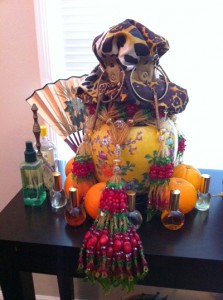
This is Oshún’s pot as received in Santeria. The orishas are made of stones, shells and tools – not statues.
In both instances the divination is done on the floor because the earth is a sacred and holy place and the most important divinations are done seated on the mat. The reading performed by this babalawo was done with cowrie shells (not used by Babalawos), on a table (not done for readings to determine a person’s tutelary orisha), on a brown rug (not used in Santeria for readings), with no ibos (no token items like a stone, efun, aye, goat astragalus bone) which are required for the client’s orí (higher self) to be engaged in the reading and lend its voice. It is also not usually considered a good thing to know your tutelary orisha until you are already making preparations and saving money for your kariocha initiation.
The babalawo threw the shells on the mat only once (two casts are required in Santeria Lucumí practice), he never counted odu, and instead began to perform a cold reading (a technique used by fraudulent readers and “spiritualists” that uses very general statements and watches a person’s reaction until something clicks) telling me general, unfocused and totally inapplicable statements about my past lives (a concept that is not a part of Santeria’s cosmology).
Traditional diloggún divination is a numerical system where the number of cowries that are mouth up are counted to discern an odu (from 1 to 16 – let’s use and example of 5), the shells are tossed a second time to get another number (again, 1 to 16 – let’s say the second toss was 7) and these two numbers become the composite odu. In this example our composite odu is 5-7, and contains a myriad of information, patakis, ebós, taboos, strengths and weaknesses. After the composite odu is determined, the diviner should hand the client two ibo (small items like a stone and a piece of cascarilla/efun) and tells the client to shake the two and separate them with one item in each hand. One represents yes, the other no. The diviner will manipulate the cowries and tell the client which hand to reveal. This indicates if the reading comes with blessings or misfortunes (Iré or osogbo). This also allows the client’s orí (higher self) to partake in the reading and give its opinion. To reiterate, this babalawo used NO IBO in his reading at any time and only threw the shells once.
After he was done giving me a cold reading the babalawo then declared who my tutelary orisha was. (The entire reading was done without ever having me manipulate any kind of ibo) He also identified the wrong orisha as my tutelary orisha. Had he taken a moment to ask me about my past or about my involvement in Santeria he might have found out that I am an initiated olorisha of ten years, crowned with Shangó instead of with the orisha he was claiming.
Harmless or Harmful?
What pained me the most about this experience is that the staff at the store and the babalawo were very friendly people. They were willing to show me what they had and genuinely have love for the orishas, but their practice was completely incorrect according to the traditions of Santeria. This leads me to believe two possible scenarios. In the best case scenario we are looking at people with real love for the religion being led by someone who was never taught nor initiated properly. At worst case we have a situation where someone is misinforming others who genuinely want to learn about Santeria and giving them fraudulent initiations for money.
While we cannot discern what their intentions may be, it is clear that they are trying to portray this operation as the only legitimate practice of Santeria in Southern California. What we perceived is that the followers of this babalawo seem to be people who come from neo-pagan backgrounds, are primarily anglo in their ancestry and are not familiar with the cultural elements of Santeria and don’t know what warning signs to look out for, but have genuine heart and want to learn. He is offering them an “experience” of the orishas with none of the uncomfortable things their pagan tenets won’t accept: like blood sacrifice or the dedication required of a year in white as an iyawo, etc.
The spiritual practices of this lineage (ilé) are not traditional according to those who bear the cultural values of Santeria, nor is it in alignment with the core concepts of Santería Lucumi/Lukumí. Yet, these individuals who have paid for classes and been initiated consider themselves Santeria initiates and will never be accepted by the public for what they practice. Worse, they’ll go into the public touting their “credentials” and be quickly shamed once they realize they are not practicing African-based spirituality, nor do they have a true priesthood in Santeria.
Education To Prevent Abuse
At the Santeria Church of the Orishas, we seek to educate the public about what proper practices look like in Santeria so that you have the tools needed to discern what is legitimate practice and what is unconventional, untraditional, illegitimate practice. We hope with this SAFE Alert that you’ll have a better understanding of what a real Santeria diloggún reading looks like versus this fraudulent practice being conducted at this store in our area.
Keep in touch with our SAFE Alerts and read all about our Santeros Against Fraud and Exploitation church action committee by clicking on the “SAFE Alerts” category on the right hand navigation.
**Follow Up**
We recently revisited the shop and discovered that they no longer offer Santeria classes nor do they have a Babalawo reading at their shop.

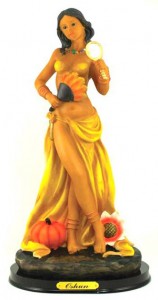
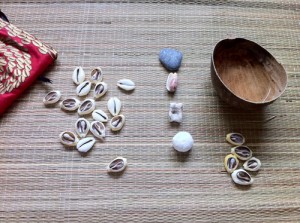
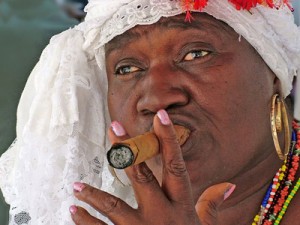
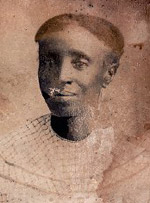
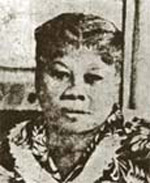
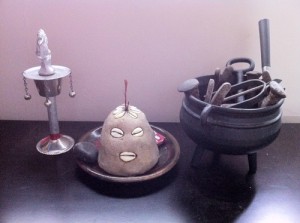
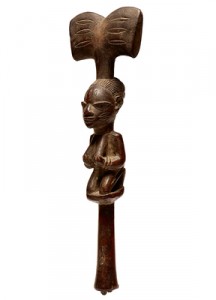
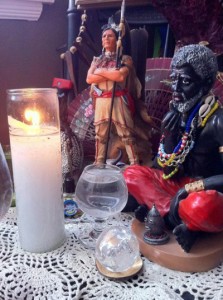
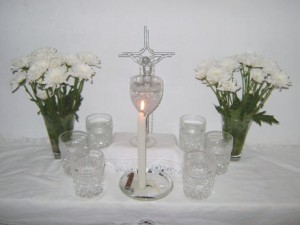
 Pagan Blog Project
Pagan Blog Project
Follow Us!